Swaddle bathing: an improved experience for preterm infants
Swaddle bathing for preterm infants was introduced in a level three neonatal unit in Scotland. The effects on the babies’ temperatures and stress levels were assessed. Staff and parents provided feedback/testimonials on their experiences with swaddle bathing. This initiative is no longer exclusive to preterm neonates; any neonate that is deemed medically stable can be given a swaddle bath.
Michelle Brooks
Advanced Specialist Nurse – Neonatal Practice Education
michelle.brooks@lanarkshire.scot.nhs.uk
Gill Currie
Advanced Practitioner Neonatal Occupational Therapist
Neonatal Unit, University Hospital Wishaw, Scotland
It is generally accepted that bathing can be a stressful experience for term infants and signs of distress are anticipated during bathing, especially crying.1 With this in mind, careful consideration should be given to the impact of bathing on vulnerable preterm infants.1 Bathing can cause a stress response resulting in altered physiological outcomes, including:2,3
- heart rate
- peripheral capillary oxygen saturation
- salivary cortisol levels
- sleep-wake states.
Maintaining a normal thermal environment is important for the neonatal population; hypothermia can lead to increased morbidity and mortality. The preterm infant, especially, is at risk of heat loss due to a large body surface area in comparison to body mass, low brown fat stores and thinner skin. Reducing stress while maintaining body temperature, therefore, is a key component for consider-ation when bathing preterm infants.4
A randomised controlled trial comparing tub bathing and sponge bathing, recommended that tub bathing was superior to sponge bathing as it increased comfort, which minimised stress.5 Swaddle bathing (FIGURE 1) is a method of tub bathing that is hypothesised to maintain body temperature and reduce the stress associated with traditional tub bathing.
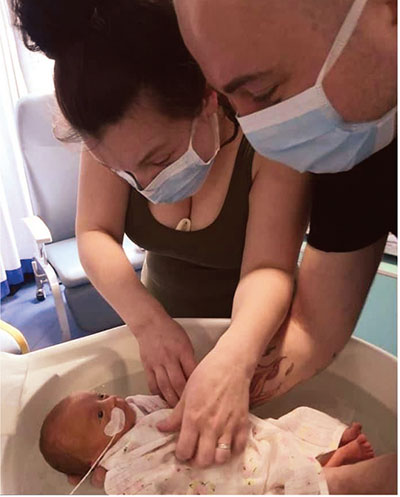
FIGURE 1 Parents swaddle bathing their baby.
What is swaddle bathing?
Swaddle bathing involves:
- placing the infant in a flexed midline position
- swaddling in a soft wrap
- immersing in a tub of warm water
- unswaddling the limb to be washed, then re-swaddling the limb after washing before progressing to another limb.
This maintains the baby in a midline flexed position throughout, making it a developmentally supportive procedure. Reported benefits include decreased stress, reduced crying, improved state control, increased self-regulatory behaviours, increased feelings of security, increased social interaction, and increased ability to feed following bathing.4
Caka and Gozen6 investigated the effects of swaddled and traditional tub bathing methods on crying and other physiological responses of newborn infants. They determined that the mean duration of crying was significantly lower in the swaddle-bathed group. Paran et al7 compared the effects of swaddle and conventional bathing methods on behavioural responses in preterm neonates, concluding that swaddle bathing significantly reduces stress-related behaviour compared to traditional tub bathing. A systematic review by Fernadez and Antolin-Rodriguez8 advocates swaddle bathing and proposes that the chosen method of bathing a premature infant is extremely important to their care and outcomes.
Initially, being wet may come as a surprise to the infant and feel a little uncomfortable; however, infants who feel safe and secure during the procedure begin to relax. Immersion in warm water can provide comfort and can calm a preterm infant and improve the quality of their sleep.2,9 Supporting and handling a baby with gentle touch and containment during bathing should reduce the signs and levels of stress.9
As well as being developmentally supportive, swaddle bathing also incorporates the benefits of family-centred care. Bathing a baby is a special milestone, and this should be a shared moment between parent and infant. Early caregiving, such as bathing and self-care, assists parents to establish their role within the environmental restrictions of the neonatal unit. Family-centred care principles adopted in the approach to caregiving promote the parent-infant relationship and family involvement in the neonatal unit.10,11 Experiences that enable parents to participate in occupations associated with the role of parenting are important to promote interaction between parent and baby and an understanding of their baby’s needs, which can help with attachment and increased confidence.12
The swaddle bathing project
Prior to the implementation of the swaddle bathing project, standard practice at the level three neonatal unit at University Hospital Wishaw was to traditionally bathe infants whenever the staff deemed it appropriate. As this was often towards the latter part of their stay while in the special care baby unit, this was the area that we chose to pilot the project, before rolling it out across the whole neonatal unit.
Hypothesis
Babies given a swaddle bath would cry less, they would not lose any significant body heat and therefore conserve energy. Swaddle bathing would be a positive experience for the baby, parents and staff.
Methodology
A multidisciplinary swaddle bathing implementation team was formed consisting of a practice education nurse, occupational therapist, charge midwife and nursery nurse. The team watched online video demonstrations and then trialled the process with various bath tubs, swaddles and a doll before settling on a traditional baby bath and standard muslin. This was the most cost-effective solution as it meant we didn’t need to purchase specialist equipment. It was also very simple to implement as the new bathing procedure was very similar to the existing traditional tub bathing, with only the addition of a muslin for containment. This made staff education a more seamless process and made it easy for parents to continue with swaddle bathing following discharge.
A swaddle bathing protocol was developed, eligibility criteria were set and teaching workshops and practical demonstrations were provided for both staff and parents. Our ideas were organised into a driver diagram to give the project clear purpose and direction (FIGURE 2).
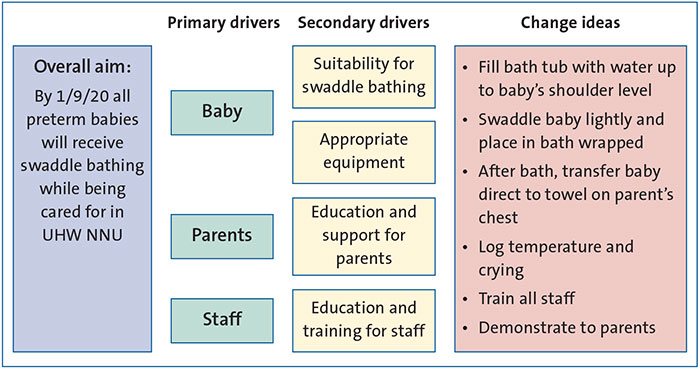
FIGURE 2 The driver diagram. Key: UHW NNU=University Hospital Wishaw Neonatal Unit.
Eligibility criteria
Eligibility criteria were initially set to only include preterm babies but the criteria changed over the course of the project to include any baby deemed medically stable for a bath, including those on respiratory support and/or requiring thermal support.
Aim
Within one year of implementing the swaddle bathing project, all preterm infants within the neonatal unit would be bathed using this method.
The protocol
Ensure the water temperature is 37-38°C. Fill the tub so that the water is at shoulder level. Wash the baby’s face first, while swaddled. Follow the steps outlined in FIGURE 3. Wash the baby’s hair last. Finally, transfer the baby to a towel on the parent’s chest.
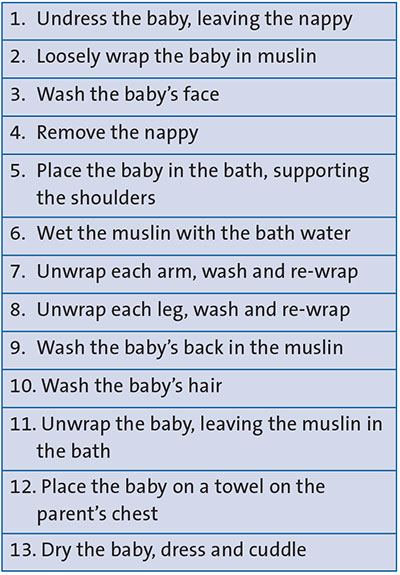
FIGURE 3 The swaddle bathing procedure.
For a baby’s first bath, our standard practice was to demonstrate the procedure to the parents with a staff member holding the baby and the parent washing using a bare hand to ensure skin-to-skin contact. Then there would be a switch over so that the parent was holding the baby and the member of staff could assist transfer to the parent’s chest. Thereafter, when the parents reached the point that they were confident and competent, they were able to bathe their infant under supervision, with minimal support.
Outcome measures
Bathing logs were compiled and completed following each bath. The outcome measures used were:
- a post-bath temperature within the normal range (normothermia = 36.5-37.5°C)
- no crying during the bath.
To ensure normothermia, pre- and post-bathing temperatures were measured for a pilot period of four months. Once temperature stability was proven, stress during bathing became the main focus and whether or not the baby cried during the bath was assessed.
Results
The temperature was recorded for the first 15 babies that were swaddle bathed, with corrected gestational ages ranging between 31-39 weeks. 93% of temperatures were maintained within normal range. No babies became hypothermic. One baby had a post-swaddle bath temperature that measured outside the upper range (FIGURE 4).
We recorded the methods of bathing babies over a 12-month period; in that time, 92% (n=37) were swaddle bathed and 8% (n=3) were traditionally bathed. Of the babies that were swaddle bathed, 6% cried in comparison to 33% of babies who were traditionally bathed (FIGURE 5).
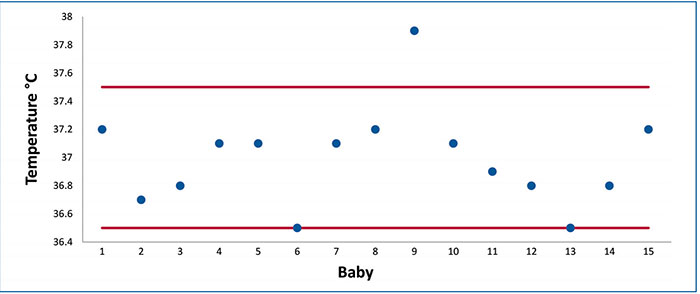
FIGURE 4 The temperature of the babies following a swaddle bath. The red horizontal lines represent normothermia temperature, 36.5-37.5°C.
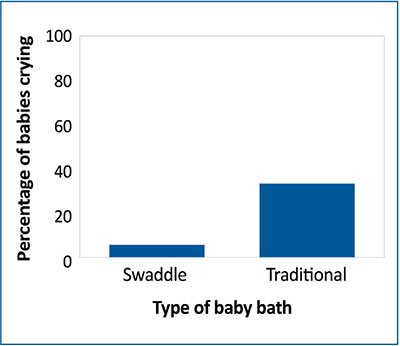
FIGURE 5 Number of babies who cried during bathing.
Challenges and successes
Initially there was some staff resistance, as to be expected with any change. However, following education and practical experience, staff have embraced swaddle bathing and provided positive feedback.
This initiative is no longer exclusive to preterm neonates; any neonate within the neonatal unit at University Hospital Wishaw that is deemed medically stable can be given a swaddle bath. This has enabled us to bathe more preterm and higher dependency babies than we would have traditionally bathed. It also appears to be particularly beneficial for those with neonatal abstinence syndrome and hypotonic infants. Many parents have reported continuing swaddle bathing at home. The project has been presented at neonatal nursing and occupational therapy conferences and swaddle bathing has been integrated into neonatal nursing university programmes in Scotland.
Testimonies
Parental testimonials have been exclusively positive, stating how much they and their infants enjoy swaddle bathing (FIGURE 6).
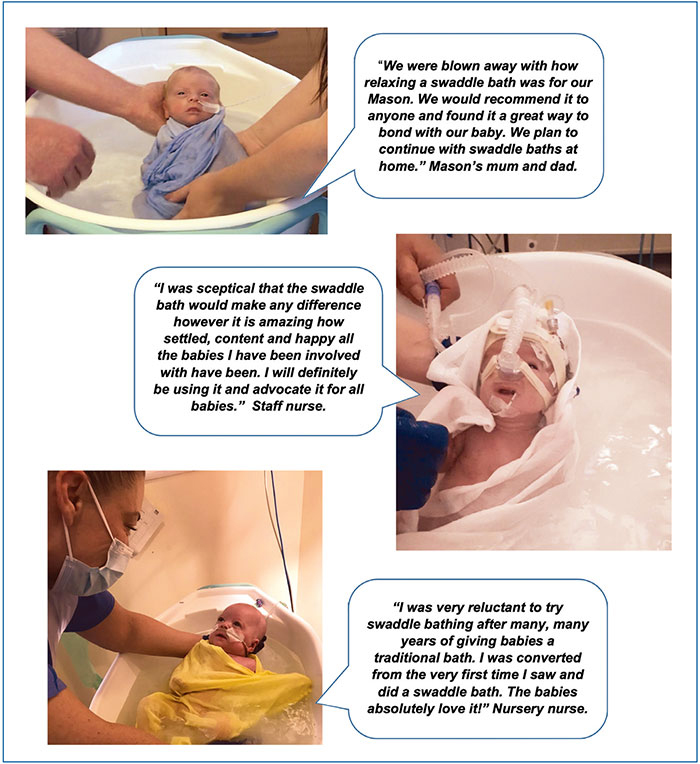
FIGURE 6 Parent and staff reactions to swaddle bathing .
Conclusion
Our goal for swaddle bathing to become standard practice has been achieved. Any baby in the neonatal unit can be given a swaddle bath when deemed medically fit. The project demonstrated that babies do not lose heat with swaddle bathing; therefore, pre- and post-bath temperatures are no longer obtained.
It is vital to include and empower parents to actively participate as partners in the care of their baby. Due to the procedures required in the neonatal unit, touch is often an unpleasant experience for fragile preterm babies. Given the results and testimonies of parents and staff, the use of swaddle bathing offers a more pleasant experience than traditional bathing. The reduced incidence of crying, makes it clear that the babies are under less stress than a traditional bath. For parents, bathing is an important milestone in their baby’s journey, and swaddle bathing is a more enjoyable experience for baby and parent. As clinicians, we must not underestimate the importance of this experience and the use of positive touch on the potential impact to long-term developmental outcomes. Henceforth, swaddle bathing can be seen as a crucial tool in providing developmentally supportive and family-centred care for babies and families in the neonatal unit.
Acknowledgement and parental consent
The authors would like to thank Lorraine McGrory, Augusta Anenih, Lorna Lennox, Anne Moylan, Mary Law and Lillias White for their contributions to this project.
Written consent for publication of the images was obtained from the parents of the patients.
Further reading
- Altimier L, Phillips R. The neonatal integrative developmental care model: advanced clinical applications of the seven core measures for neuroprotective family-centered developmental care. Newborn Infant Nurs Rev 2016;16:230-44.
Bliss. Handle me with care: supporting your premature baby’s development. Online at: www.swft.nhs.uk/application/files/9615/0106/1643/handle_me
_with_care_APCP_bliss.pdfBliss. Look at me – I am talking to you. Watching and understanding your premature baby. 2006 online at: https://shop.bliss.org.uk/shop/files/Lookatme2019WEB.pdf
Ceylan SS, Bollslk B. Effects of swaddled and sponge bathing methods on signs of stress and pain in premature newborns: implications for evidence-based practice. Worldviews Evid Based Nurs 2018;15:296-303.
Lund C. Bathing and beyond. Adv Neonatal Care 2016;16:S13-S20.
McAnulty G, Duffy FH, Butler S, et al. Individualized developmental care for a large sample of very preterm infants: health, neurobehaviour and neurophysiology. Acta Paediatr 2009;98:1920-26.
Quraishy K, Bowles SM, Moore J. A protocol for swaddled bathing in the neonatal intensive care unit. Newborn Infant Nurs Rev 2013;13:48-50.
Symington A, Pinelli J. Developmental care for promoting development and preventing morbidity in preterm infants. Cochrane Database Syst Rev 2006;2006:CD001814.
Warren I, Mat-Ali E, Green M, Nyathi D. Evaluation of the Family and Infant Neurodevelopmental Education (FINE) programme in the UK. J Neonatal Nurs 2019;25:93-98.
Or read this article in our
Tablet/iPad edition
- Swaddle bathing has become standard practice in the neonatal unit at University Hospital Wishaw.
- Babies cry less during bathing and appear relaxed; parents, babies and staff enjoy the experience.
- No babies have experienced any undesirable effects, including hypothermia.
Also published in Infant:


